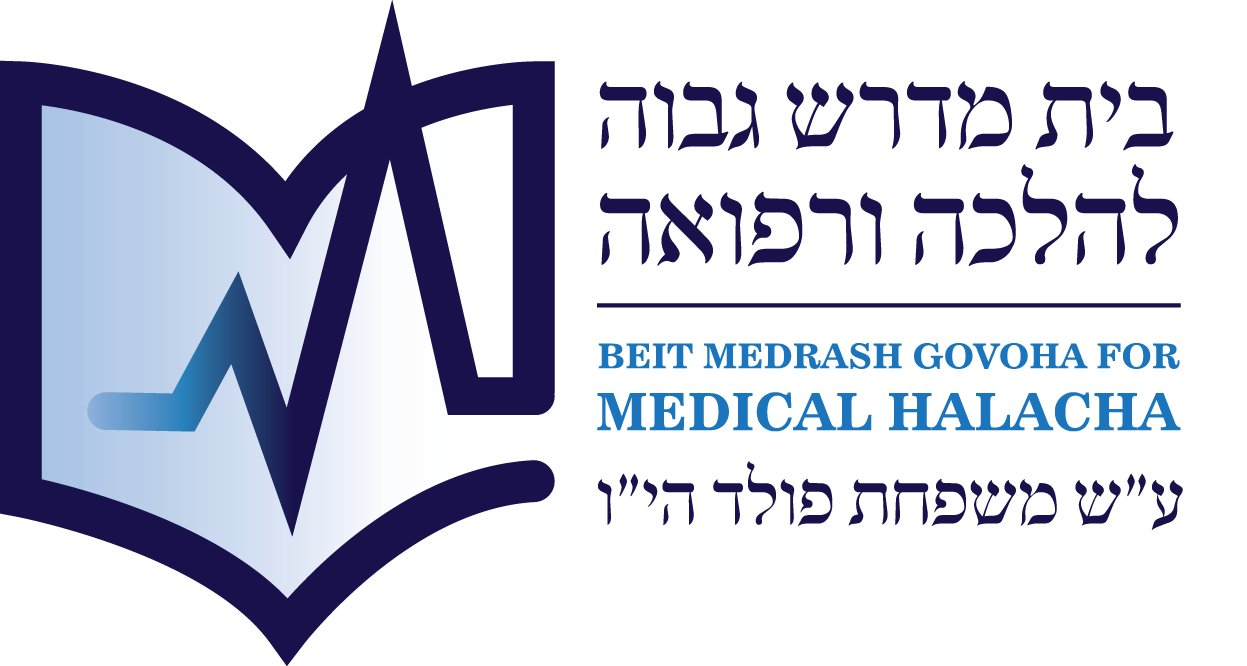The Gemara states (Bava Metzia 79b):
The Rabbis taught: If one hires a donkey for a man to ride on, a woman may not ride it; but if it was hired for a woman, a man may ride it. Regarding a woman, [the law applies] whether she is an adult or minor, even if pregnant or nursing. [Question:] Since you said a nursing woman may ride it, why mention a pregnant one? R’ Pappa said: It refers to a woman who is both pregnant and nursing. Abaye said: Learn from this that a fish’s weight is determined by the size of its belly. What practical difference does this make? For business dealings.
In other words, if someone rents a donkey for a woman to ride, any woman may ride it, even if she is pregnant or nursing and therefore heavier than a “normal” woman. Abaye infers from this Halacha that the weight of a fish is primarily determined by the size of its belly. The practical implication is that if someone is purchasing a fish and sees that it has a large belly, he should ensure the seller removes its intestines before weighing it, as they are not edible.
The Rishonim[1] are puzzled by this Gemara since it is obvious that the size of their belly significantly influences a person or animal’s weight! What Chidush is the Gemara trying to convey?
The Rashash (ibid.) provides a remarkable explanation:
It seems to me, based on the scientists’ assertion that a person weighs less after eating than when he is hungry, that when the belly is full (with food), the person is lighter than when it is empty. Therefore, the Gemara is teaching something novel: it is different when the belly is full due to pregnancy, as the pregnancy causes heaviness. The same is true of a fish: when its belly is full of eggs, it adds to its weight.
These statements are perplexing. Eating surely increases the weight of a human or animal immediately!
The Rashash’sassertion (in the name of scientists) can already be found in the Shita Mekubetzes. The Mishna states: “One who says, ‘my weight is upon me’ (i.e., he vows to give the value of his body weight to the Beis HaMikdash), must give his actual weight” (Arachin 5a). Thus, when fulfilling his vow, he must be weighed. The Shita Mekubetzes, quoting the Rosh, notes that:
He must be precise about the time that he is weighed, for a person is heavier in the morning before eating than after eating.
The Sefer Hayu Devarim Me’olam[2] offers an explanation based on the Sefer haBris of R’ Pinchas Eliyahu of Vilna[3] (1:6, Ma’aneh b’Eish, 2):
According to the ancients, fire has no weight. But modern scientists assessed and found that it does, though it is the lightest of all substances. This can be observed when a piece of iron is heated in fire – it weighs more than before being heated… Therefore, when a person is hungry, he weighs more than when his belly is full of food and he is satisfied. This is due to the heaviness of natural heat, which increases during hunger pangs.
R’ Yitzchak Zilberstein Shlit”a provides another rationale for why an individual might weigh less after consuming food, despite the logical expectation that food would increase weight: food induces a sensation of lightness and well-being. He references the Pasuk, “A man’s spirit sustains his illness” (Mishlei 18:14) to support this claim, although the connection to this phenomenon is not entirely clear.
He also references the Gemara in Shabbos (94a) that states “a living person carries his own weight” (“Chai Nosei es Atzmo”). This teaches us that a person’s weight is not purely based on physical mass.
The Mishna (ibid. 93b) rules that one who carries a live person in a Reshus haRabim on Shabbos is exempt. The Gemara explains:
Shall we say the author of the Mishna is R’ Nasan and not the Rabbanan? For it was taught: One who carries an animal, beast, or bird into the public domain, whether alive or slaughtered, is liable; R’ Nasan says: For slaughtered ones he is liable; for living ones he is exempt, because a living being carries itself. Rava said: You can even say the [Mishna is the opinion of the] Rabbanan. They only disagreed with R’ Nasan in the case of animals, beasts, and birds that resist and drag themselves down. But regarding a human being who carries his own weight, even the Rabbanan agree. R’ Yochanan says: R’ Nasan concedes this does not apply when the person is restrained.
Rashi clarifies that Chai Nosei es Atzmo refers to a person who “lightens himself and carries himself.” In contrast, animals “drag themselves down and make themselves harder to carry.” This teaches us two things:
- A human being reduces his effective weight by bearing it himself.
- Animals increase their effective weight by resisting or dragging.[4]
It is challenging to comprehend the concept of Chai Nosei es Atzmo. There are three possible interpretations:
- Rashi explains that the living person lightens the burden by supporting his own weight.
- Tosfos question this: Even if the load is lightened, carrying any burden is still forbidden on Shabbos! Tosfos propose an alternative: the exemption is based on the rule of “two people performing one act” (Shnayim She’asu). However, Tosfos reject this because if one of the two could perform the act on his own and the other could not, the capable one is liable. In our case, the carrier can carry alone, but the person being carried cannot carry himself!
- The Rosh rejects Tosfos’ objection and maintains that if the second person is indeed helping, then all agree that the exemption of Shnayim She’asu applies – even if one could do it alone while the other could not.
Thus, according to all opinions, the basic assumption that there is a difference between carrying a living person and a dead one, even when the living person is fully off the ground, is clearly established in the Gemara.
We find a similar idea in the Gemara in Gittin (56a):
Abba Sikra, head of the zealots in Jerusalem, was the nephew of Rabban Yochanan ben Zakkai. [R’ Yochanan] sent a message: Come to me secretly. When [Abba Sikra] came, [R’ Yochanan] said: How long will you continue this and cause everyone to die of famine? [Abba Sikra] replied: What can I do? If I say anything, they will kill me! [R’ Yochanan] said: Find a way to get me out [of the city]; perhaps I can bring some salvation. Abba Sikra said: Pretend you are sick, then bring something foul-smelling and place it near you so when people come to visit they will think you have died. Let your students carry you out, and make sure no one else carries you, so they will not realize how light you are because they know that a living person is lighter than a dead one.
This adds another key point: a dead person weighs more than a living person – another physical assumption about weight that has no clear scientific explanation. Moreover, the distinctions made in Maseches Shabbos (that a sick person or one who is restrained is not considered to be “carrying himself”) are also hard to understand scientifically.
Many have noted that the Rambam appears to interpret this principle differently. In Hilchos Shabbos (18:16), he rules:
One who carries an animal, beast, or bird – even if they are alive – is liable. But a living human being is not considered a burden [and one who carries him is exempt]. However, if he is tied up or ill, one who carries him is liable. A woman may drag her child if the child is walking –i.e., sometimes walking and sometimes being carried.
The Rambam appears to hold that the principle is not scientific, but Halachic: a living human being is not defined as a “burden”, not because he physically reduces his weight, but because of the normative behavior, a person normally carries himself. Thus, this is a legal categorization that carrying a person is not Halachically significant, not a statement about mass or physics.
We thus find ourselves with two Halachic concepts related to weight that remain difficult to fully explain, even today:
- Human body weight before or after eating: We saw earlier that this has implications for Halachos of Nedarim, where exact weight matters.
- Chai Nosei es Atzmo: This has Halachic ramifications beyond Shabbos, such as in the laws of Treifos. For example, if an animal falls from a height of less than ten Tefachim, it is not deemed a Treifa due to this principle (see the commentaries on Yoreh De’ah 58).
[1] See Tosfos, Chidushei haRitva, and Chidushei haRan ibid.
[2] R’ Yisrael Denderovitz shlit”a (1978-)
[3] R’ Pinchas Eliyahu Hurwitz zt”l (1765-1821) was a Rav, Mekubal, and author of many Sefarim, most notably Sefer haBris, first published anonymously in 1797, then as Sefer haBris haShalem in 1807. The Sefer covered a wide range of topics including Emuna, Halacha, Mussar, Kabbala, nature, philosophy, science, and technology. The Sefer was published over 40 times, including Yiddish and Ladino translations.
[4] There is disagreement among the Rishonim as to whether we also consider animals to carry their own weight l’Halacha, but we will not elaborate on that here.











Add comment